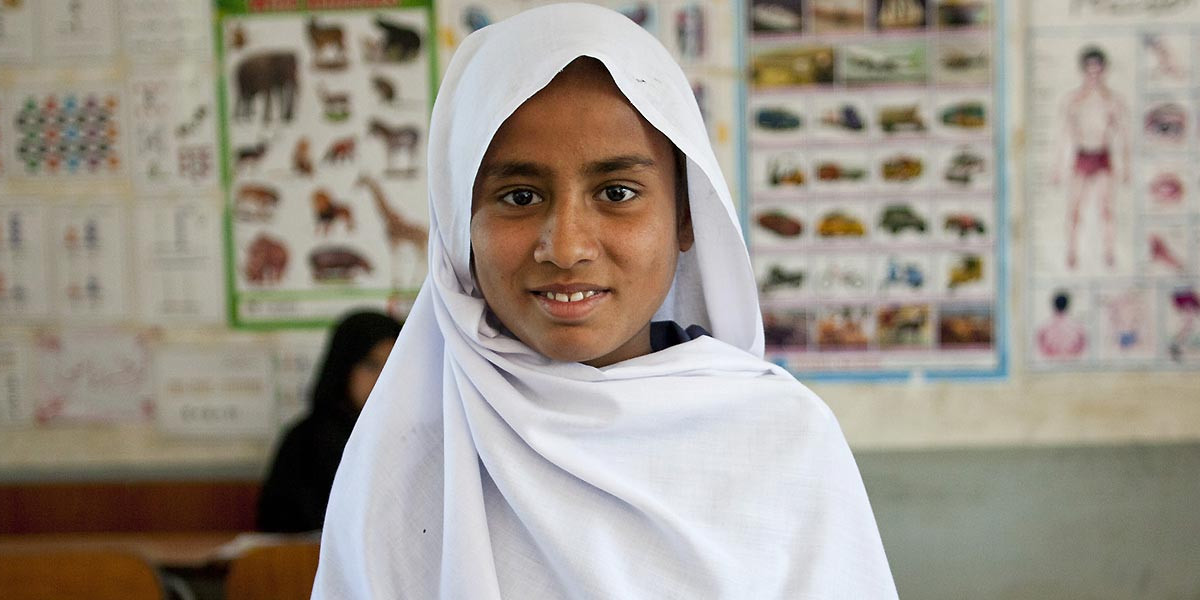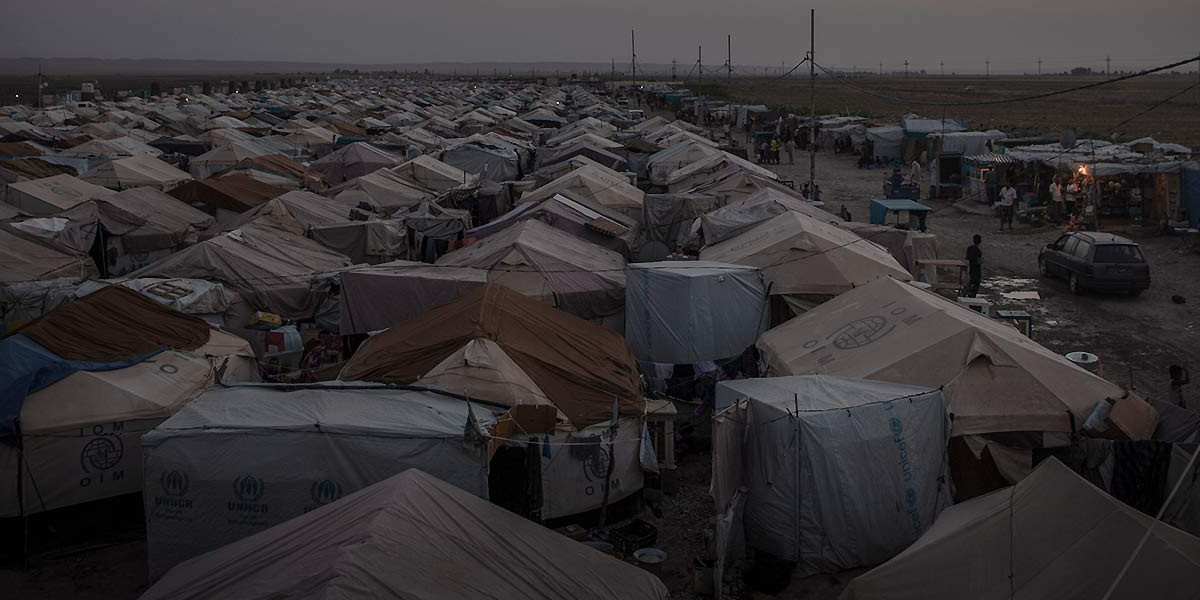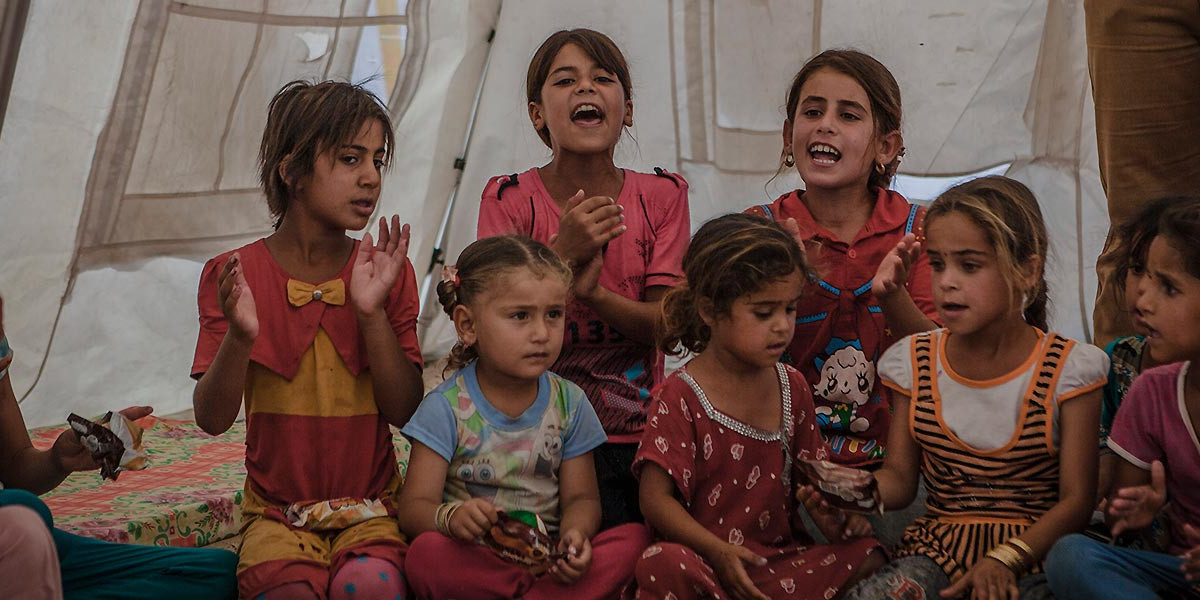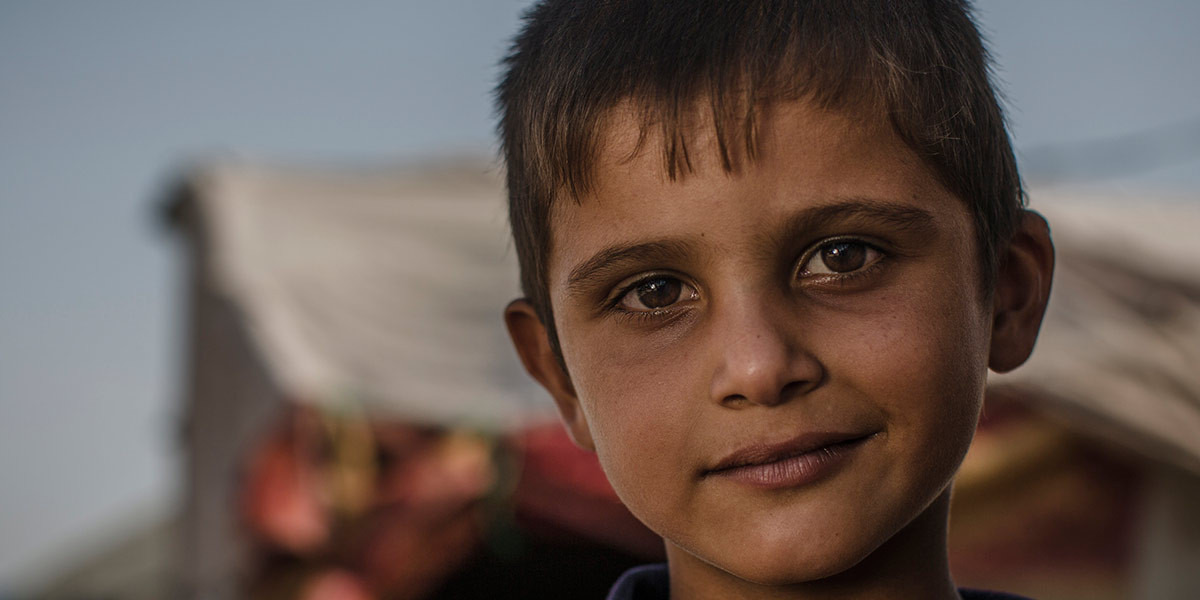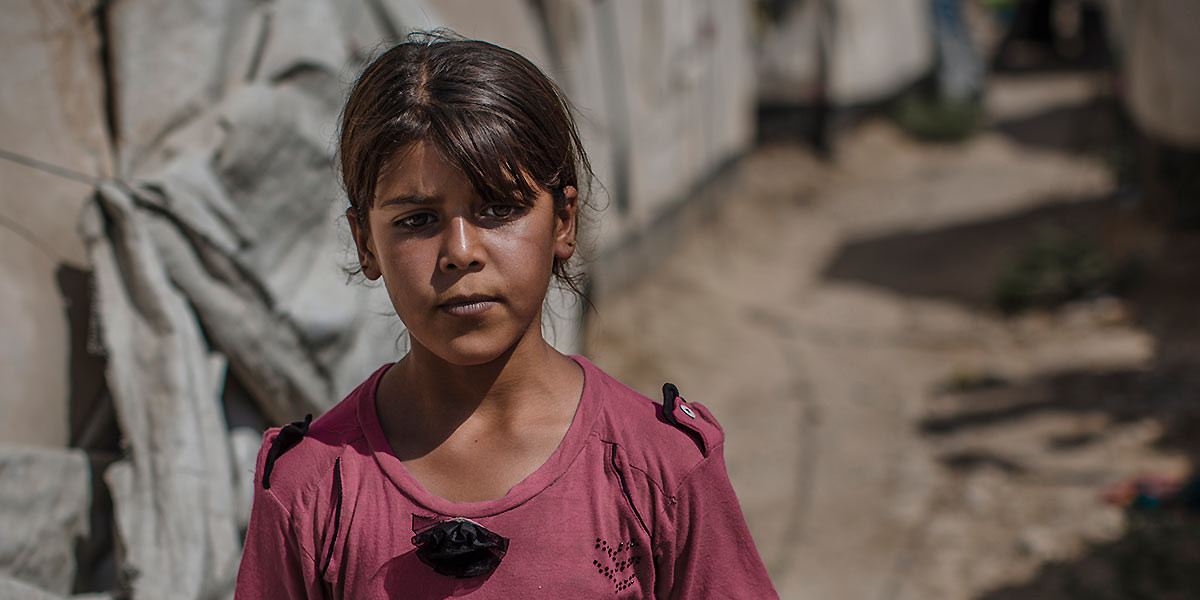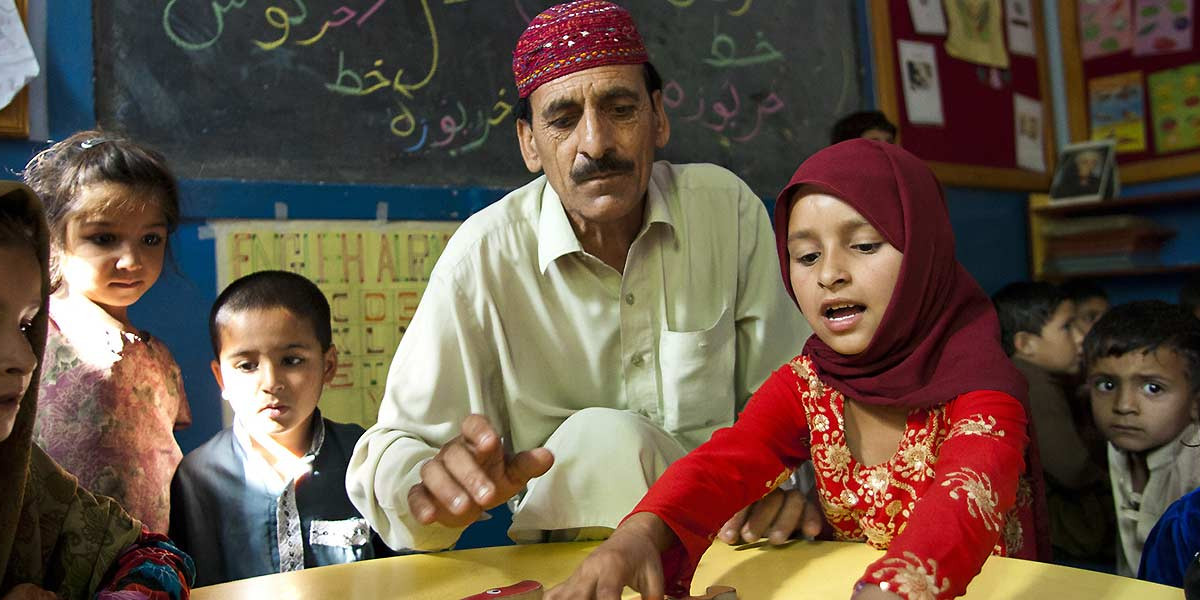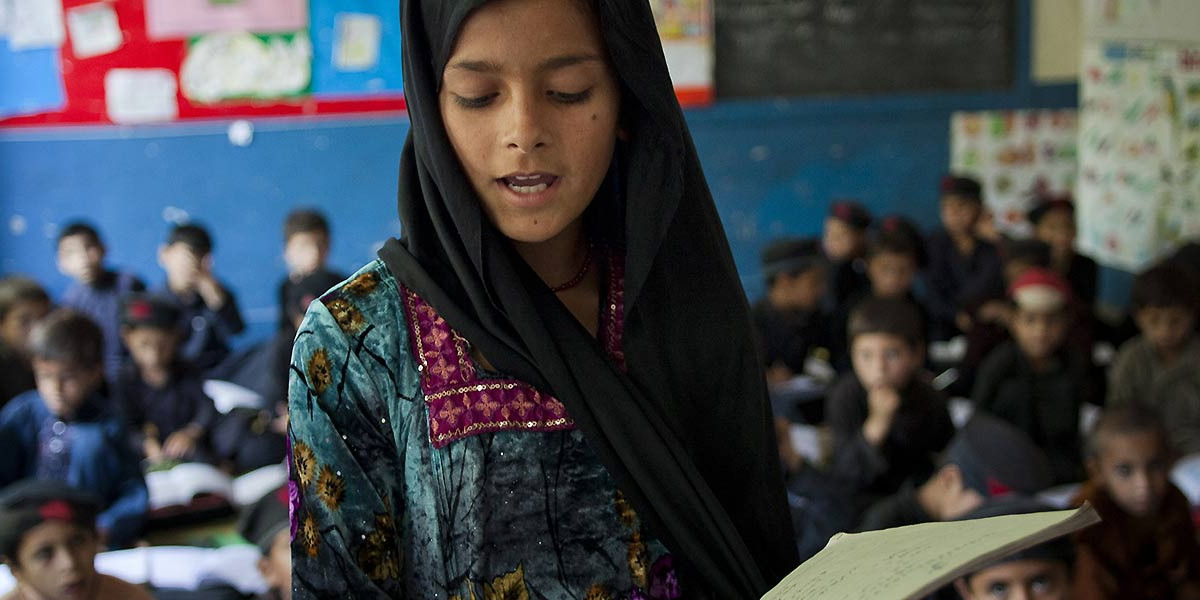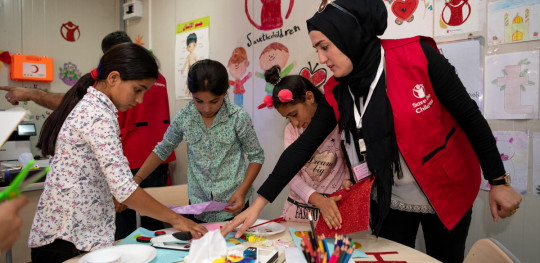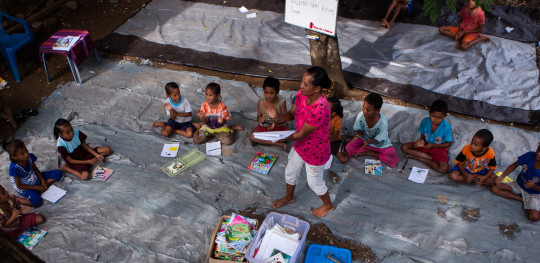Fifteen years ago, the international community made a commitment to provide universal primary school education for all children.
While considerable progress has been made, today there are still 57 million primary school aged children out of school.
You can give the gift of education by supporting school programmes so families can send their children to school. Make a difference for a child today.
Does everyone have the right to education?
Save the Children is working to ensure that every child receives a good quality education, and learns the skills they will need to thrive in the 21st century. We are breaking down the barriers to education by helping marginalised and vulnerable children – including those who are living in conflict and disaster zones - access early childhood and primary school services. Our work is leading the way in improving literacy and numeracy skills, helping teachers to teach and children to learn. Through our work, we are supporting out-of-school young people access training in a skill or occupation, so that they can get a job which provides them with enough money to survive.
In Aotearoa New Zealand, many of our tamariki living in hardship are struggling at school due to a lack of stable housing, poor nutrition and stress caused by the many challenges their families are facing. That’s why we work hard to ensure every child living here has an opportunity to thrive through our advocacy work. We are also ensuring child rights are embedded in children's learning in Aotearoa through our free child rights learning resources for schools and home available on our Education Hub.
How is the right to education violated?
Millions are missing out
Millions of children are not learning because of poverty, discrimination, the quality of the education on offer, or because they are too hungry to learn. These children leave school before they acquire the basic skills and knowledge needed to thrive within society.
Enrolment figures only tell part of the story. Around 250 million 5-to-12 year-olds cannot read or write, whether they are in school or not.
Education transforms children’s lives by helping them overcome poverty. This leads to better health and increased income opportunities. Without it, many children remain trapped in a life of poverty and hardship.
1 Gene Sperling and Barbara Herz (2004) “What Works in Girls’ Education."
2 UNESCO (2011) “The hidden crisis: armed conflict and education.”
Learning in a time of war
War and conflict is the greatest barrier for children accessing education. Eighteen percent of the world’s primary school aged children live in conflict-affected countries – accounting for an estimated 42 percent of out-of-school children globally.
Conflict can make it difficult for governments to provide schools and recruit and train teachers, both of which are vital for a quality education. Conflict also has a direct impact on children’s education, as schools and children are increasingly caught up in conflict. Armed forces and groups threaten and attack children as they travel to school. Some groups directly target schools with heavy weaponry and occupy schools for military purposes.
Escalating violence and indiscriminate attacks place children in extreme danger. Many witness or experience acts of extreme brutality.
During times of armed conflict and insecurity, the ability for students to access educational facilities can be an important source of protection. Safe schools provide life-saving information, mitigate the psychosocial impact of war and protect children from trafficking and recruitment by armed groups.
The ability to access a safe place to study and learn can provide students with a sense of normalcy, routine and calm amid the chaos of war. In the long term, a good education also promotes peace and post-conflict resolution as young people develop the skills and qualifications needed to build a life for themselves and prosperity for their communities without resorting to violence.
"Too poor" to learn
Education is the route out of poverty for many children. It gives them a chance to gain the knowledge and skills needed to improve their lives. But millions of children never see the inside of a classroom.
For many families the long-term benefits of sending their children to school are outweighed by the immediate need to send them to work or keep them at home to help with chores.
Children miss out on school because their families need them to earn money. But by sacrificing their education, they become trapped in a cycle of poverty.
Poor quality
Today, 57 million children are failing to learn, simply because they cannot attend school. However, access is only part of the educational crisis – a lack of quality education is holding back many children too.
Across the world, 200 million young people leave school without the skills they need to thrive, plus an estimated 775 million adults – 64 percent of whom are women – lack the most basic reading and writing skills. 4
The first step to improving quality is to ensure that there are enough teachers in classrooms. Many countries, particularly developing countries, face an acute shortage of qualified teachers.
Globally, an additional 1.6 million teachers were needed in classrooms to achieve universal primary education by 2015. This shortfall will rise to 3.3 million by 2030 based on population projections. 5
This shortage stems from the position of teachers within society, where they are often unsupported and undervalued. In some countries, teachers are paid poorly and sometimes irregularly, with little support for professional development or training. The quality of an education system is only as good as the quality of its teachers.
4 UNESCO (2013) “The Global Learning Crisis."
5 UNESCO (2013) “A Teacher for Every Child."
Why is the right to education important?
A reading crisis
Today, 250 million children aged between five and 12 can’t read, write or count. That’s more than a third of the world’s primary school-aged children.
Some of these children have no access to schooling. But for many others, poor school infrastructure and a lack of qualified teachers mean that going to school doesn’t result in an education either.
A child born poor who gets a decent education has far more chance of leaving their circumstances behind.
They can get better jobs, lead richer lives and fulfil their potential. If all students left school with basic reading skills, 171 million people could be lifted out of poverty. Education can even save lives: educated mothers are better informed about specific diseases, so they can take measures to prevent them. If all women completed primary education, then UNESCO estimates that 189,000 women’s lives would be saved every year, and that under-five deaths would fall by 15%.
Literacy is about more than being able to read: it’s a world-changing, life-enhancing, life-saving skill. Save the Children is working in nearly 30 countries to improve the literacy skills of primary aged children.
We believe every child has the right to an education to succeed in life. Make a difference to a child today by giving them the gift of an education.
Education for equality
The right to education is universal, yet girls continue to suffer severe disadvantage and exclusion within education systems in many countries.
Gender disparity, which begins in early childhood and is present at all stages of girls’ lives, impacts negatively on their access to education.
Access to sanitation – such as private and separate toilets – as well as negative classroom environments, where girls may face violence, exploitation or corporal punishment, can really affect a girl’s chance of an equal opportunity to learn.
Adolescent girls also face economic and societal demands that further disrupt their education, such as household obligations, child labour and early marriage.
Recent estimates suggest that one third of girls in the developing world are married before the age of 18, and one third of women in the developing world give birth before the age of 20.
Educating girls is essential to achieving sustainable development.
Education can empower women to overcome gender discrimination so that they can make more informed choices about their lives. Empowerment benefits women and their children, contributing to a more just and inclusive society.
The future we want
Since 2000, we have made enormous progress towards universal primary education – with 91 percent of children in developing countries enrolled in primary school. This is a good start, but we still have a long way to go.
Is the right to education a human right?
The 2015 United Nations Sustainable Development Goals (SDGs) have committed to achieving inclusive and quality education for all to promote lifelong learning by 2030. This goal will be achieved by ensuring free and equitable access to quality early childhood education, and primary and secondary schooling for all.
Save the Children lobbied for, and is working to support this goal, by striving to ensure that all children can read by the time they leave primary school, and that all children caught up in humanitarian crises have access to quality education.
Our work engages children before they enter the school system, by supporting parents, early childhood teachers and children themselves through early childhood care and development programmes. Our Literacy Boost efforts will continue to reach the most poor and marginalised children in the world, supporting them to learn the basic literacy and numeracy skills needed to survive in the 21st century.
We are working to guarantee universal access to quality education, supporting children living in areas of conflict and humanitarian crisis to return to school, because we believe that access to a quality education is a fundamental human right.
Thousands of children have already been given a chance at a better future by Literacy Boost but, with 250 million still unable to read, write or count, we have a long way to go until every child gets the education that is their right. We can get there – if we work together.
How to help children today
You can help children's futures with a donation today.
Here's how your donation can help:
- Cash Grant: Your gift could provide a family with a cash grant so they can buy essential supplies for their children
- School Fees: Your gift could support school programmes so families can send their children to school for free
- School Bag Kit: Your monthly donation could give a child a 'school in a bag kit' to keep them learning safely from home
Take action now
Please help us provide education for children and their families
You may also be interested in...



